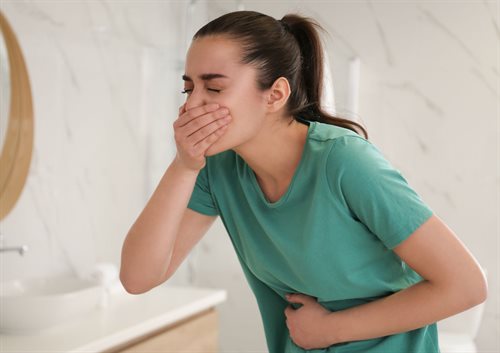Norovirus: Deep Cleaning and Disinfection Procedures
Here's some andy advice for businesses on tackling Norovirus throughout the year, but particularly during the winter months
year, but particularly during the winter months
18th January 2024
Deep cleaning: definite or suspect vomit/diarrhoea spillage area
- Identify definite or suspect vomit/diarrhoea spillage area/s
- Following a report of a vomit/diarrhoea spillage/s in a business, contact your cleaner to initiate a response and provide all required cleaning provisions (i.e. cleaning equipment, appropriate PPE, chemicals and spillage packs)
- Always make the assumption that an unexplained vomit/diarrhoea spillage is infectious. A thorough enhanced clean and disinfection should be carried out as a matter of urgency.
- This may be a service you can access through your pest contractor or another third party contractor. If infection prevention and control measures have to be dealt with in-house, you either need to hire in an industrial steam cleaner to disinfect all surfaces (including soft furnishings) throughout the premises, or use a cleaning product that has both antibacterial and virucidal properties (see guidance attached on chemical use).
Protect yourself from infection
- Wear disposable gloves and apron
Soak up the spillage
- Use granules provided with a spillage pack (follow instructions) or, paper towels/alternative to soak up the excess liquid
- Transfer these and any solid matter directly into a waste bag - you can use the disposable bag and scoop/scraper provided with the spillage pack
- Wash hands thoroughly using liquid soap, warm water and dry them
Clean up the contaminated area within 2 metres radius
- Clean the contaminated area with detergent and hot water, using a disposable cloth
- Disinfect the contaminated area, including hand contact surfaces, with freshly made 1000ppm (0.1%) hypochlorite solution (bleach) and ensure sufficient contact time according to manufacturer instructions – (steam cleaning is advised for soft furnishings/fabrics)
- Ensure any mobile equipment is moved within the contaminated area to allow effective deep cleaning
- Dispose of all materials within the contaminated area that cannot be sufficiently cleaned and disinfected
- All cleaning activities should be undertaken in a methodical manner so as not to re-contaminate decontaminated areas.
- Dispose of gloves, apron and cloths into the waste bag – Seal all contents into the bag and dispose in external waste receptacle• Wash hands thoroughly using liquid soap, warm water and dry them
Deep cleaning: other areas where vomit/diarrhoea spillages not known
- Concentrate on surfaces that may have been indirectly contaminated by hands and feet (i.e. rails, corridors, floors, tables, chairs, walls)
- If there is no aerolised vomit/diarrhoea spillage known within the area, there should be no need to move large equipment (i.e. storage cupboards, book shelves etc)
Toilets
- The frequency of toilet cleaning and disinfection should be increased and particularly after an episode of vomit/diarrhoea
- Ensure hand contact surfaces are thoroughly disinfected (i.e. toilet flushes, hand wash taps, door handles)
- Check hand wash provisions (soap, hot water, drying facilities) and replace any hand wash facilities that are absent from the toilets
- Ensure windows are open as much as possible to maximise ventilation rates
Cleaning equipment and supplies
- All cleaning equipment must be thoroughly cleaned and disinfected after use
Record all details
- Record all necessary details of the deep clean including chemicals used and areas, furnishings and articles cleaned
Staff training
Ensure that staff, especially food handlers, are made aware that they must report any sickness/diarrhoea symptoms to management as soon as possible. It is important to ensure that any food handlers suffering from gastrointestinal illness are excluded from any work relating to food handling duties and that they cannot enter a food handling area.
This exclusion is usually for 48 hours after an individual no longer shows symptoms of illness. Please ensure that a return to work interview has been completed for any staff member returning after illness, including a check on the last day and time of symptoms.
Contact us for further advice
Tel: 0300 123 6696
Email: Contact us